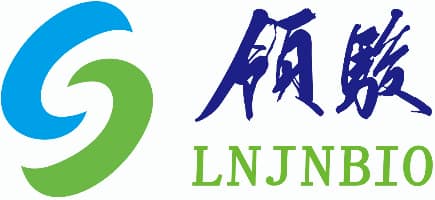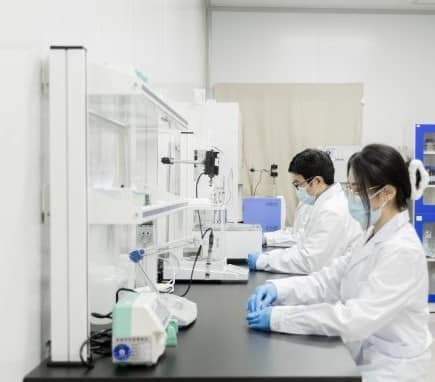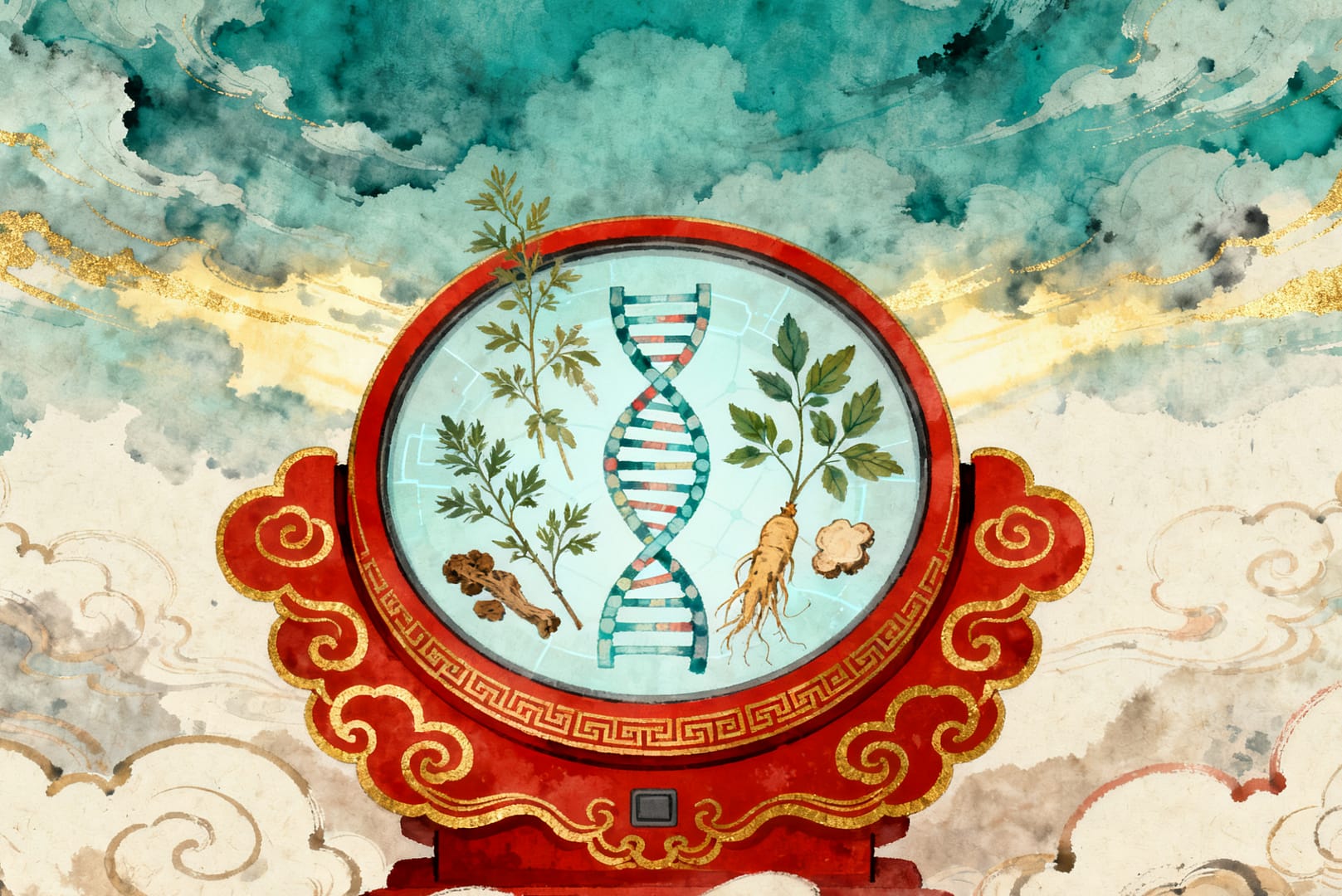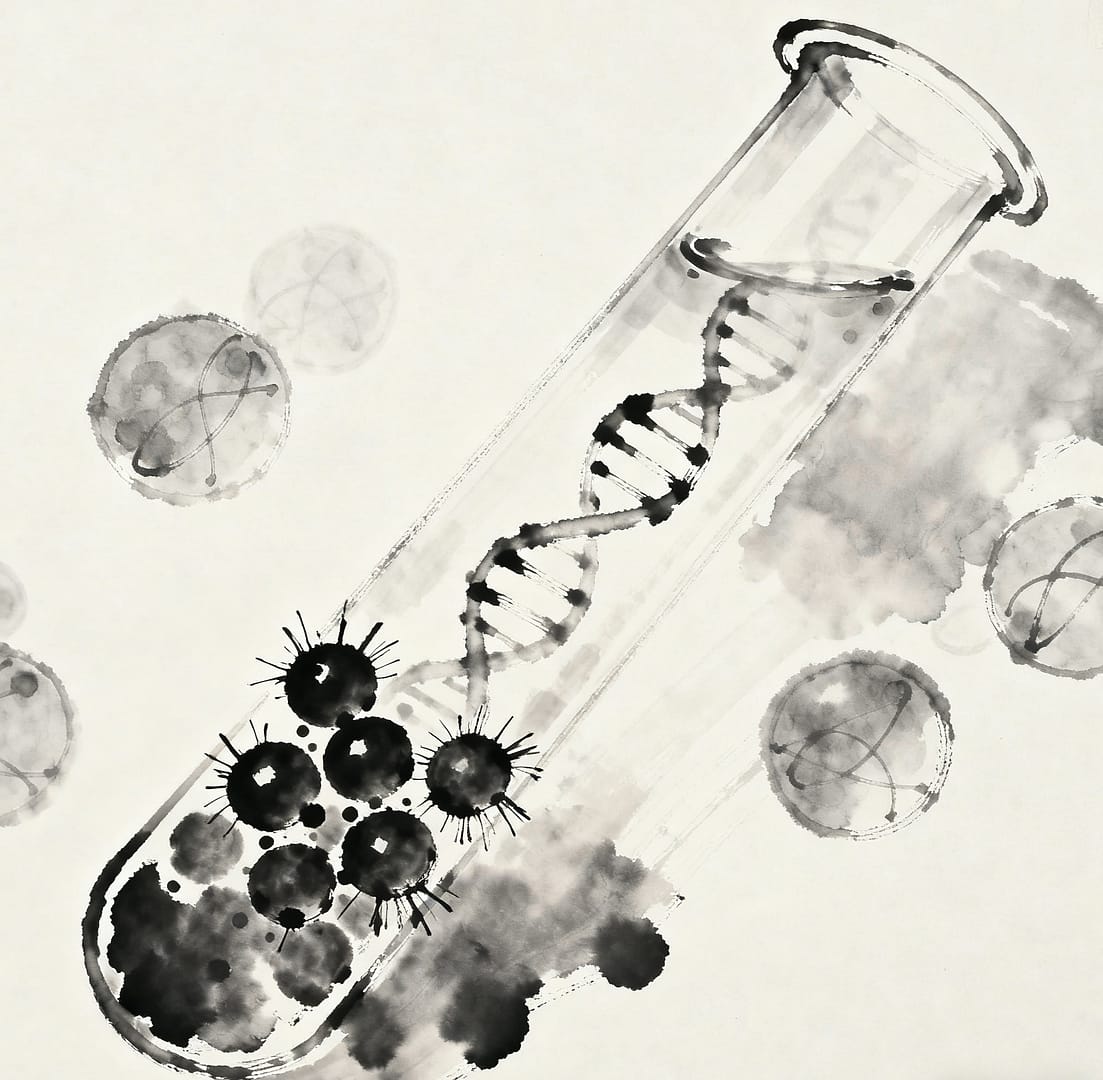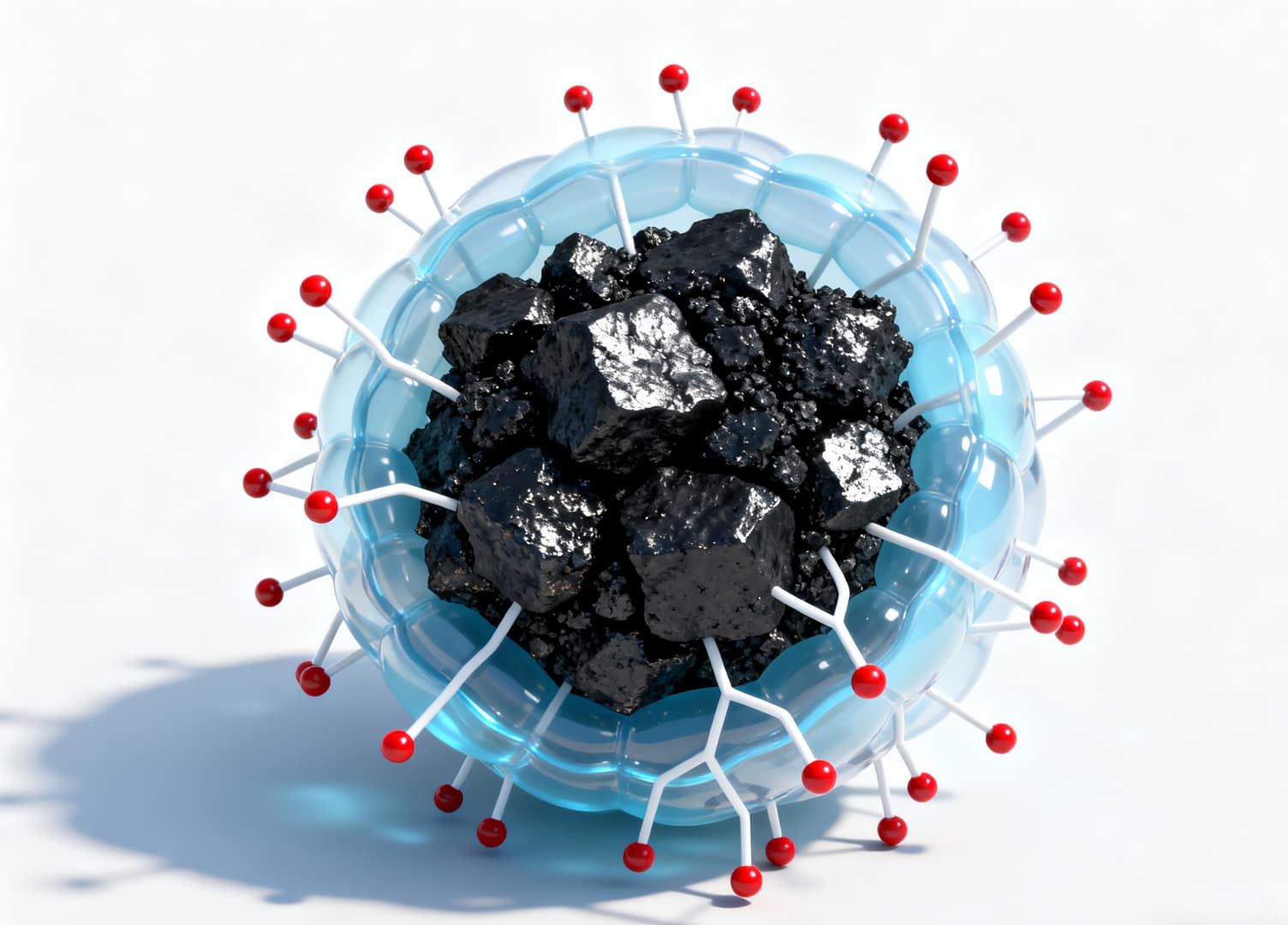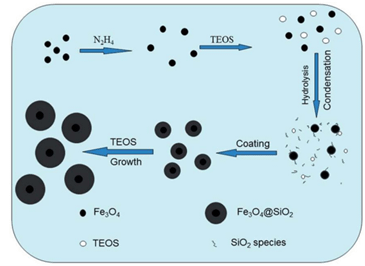Professional Manufacturer of Biomagnetic Beads

How to rapidly and efficiently extract pathogen nucleic acids?
1. Introduction
We will elaborate on the application of magnetic bead-based nucleic acid extraction in respiratory pathogen detection and highlight the advantages and features of Shanghai LnjnBio nucleic acid extraction magnetic beads (160024) in this field.
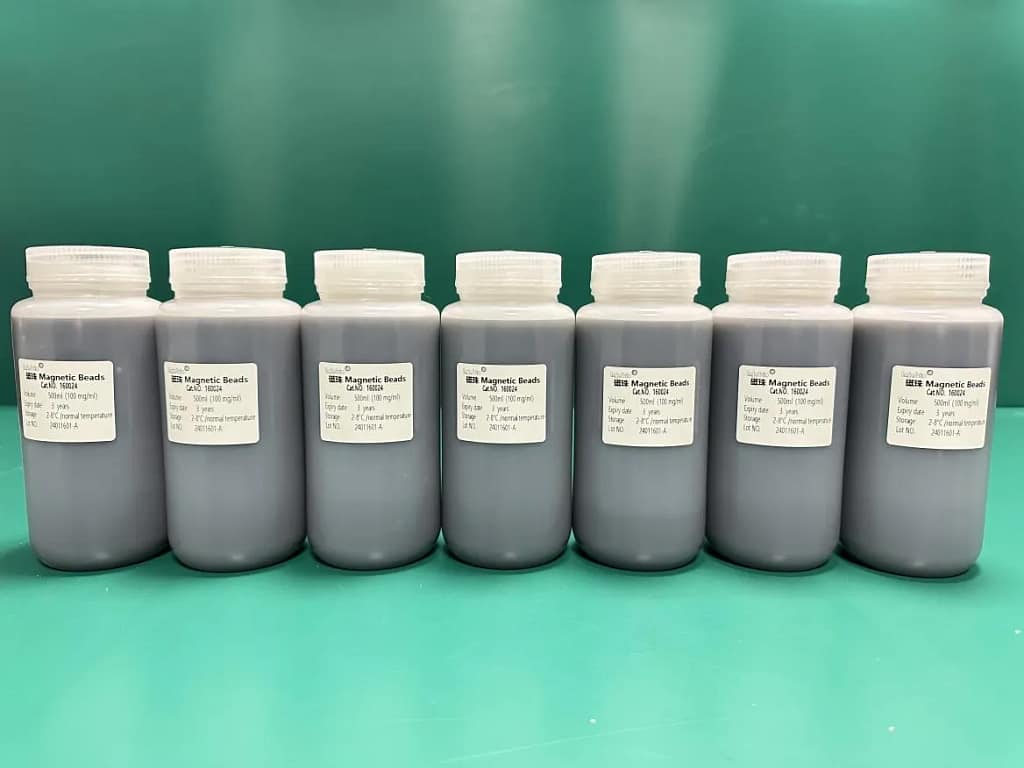
2. Core Advantages of Magnetic Bead-Based Nucleic Acid Extraction in Respiratory Pathogen Detection
Respiratory pathogen detection (e.g., influenza A/B viruses, respiratory syncytial virus, SARS-CoV-2, adenovirus, etc.) requires high sensitivity, high specificity, rapidity, and high throughput. Magnetic bead-based nucleic acid extraction technology perfectly meets these demands and has become the gold standard method in molecular diagnostics.
Its application advantages are mainly reflected in:
- Automation and High Throughput: Combined with automated nucleic acid extraction instruments, magnetic bead-based methods can process dozens or even hundreds of samples in parallel within a short time, significantly improving detection efficiency and meeting the needs of large-scale clinical testing and emergency screening during public health events.
- High Purity and High Yield: Optimized magnetic beads efficiently adsorb nucleic acids and effectively remove impurities such as proteins, salt ions, and inhibitors through washing steps. The extracted nucleic acids are of high purity, making them suitable for downstream applications sensitive to impurities (e.g., qPCR, NGS).
- Safe and Simple Operation: The entire process is conducted in a closed environment, reducing the risk of aerosol contamination and operator exposure to pathogens.
- Rapid and Efficient: The entire extraction process can be completed in 20–40 minutes, far faster than traditional phenol-chloroform extraction methods.
- Flexibility: Suitable for various sample types, such as nasopharyngeal swabs, sputum, bronchoalveolar lavage fluid, and other common respiratory samples.
3. Introduction to Shanghai Lingjun Biotechnology Co., Ltd.’s Magnetic Beads 160024
The nucleic acid extraction magnetic beads (160024) produced by Shanghai Lingjun Biotechnology Co., Ltd. are a market-verified, high-performance magnetic silica hydroxyl magnetic bead specifically designed for the extraction of pathogen DNA/RNA.
3.1 Core Product Features:
Product Code: 160024 Magnetic Beads
Application: DNA/RNA Extraction
Core Composition: Superparamagnetic silica nanomagnetic beads (silica hydroxyl magnetic beads)
Surface Group: Rich in silica hydroxyl groups (-OH), enabling efficient and reversible nucleic acid adsorption under specific buffer conditions.
Particle Size: 1.4 µm, with a large specific surface area, ensuring high adsorption capacity and efficiency.
Magnetic Responsiveness: Superparamagnetic properties with fast magnetic response and excellent dispersion. The beads quickly aggregate under an external magnetic field and uniformly redisperse upon its removal, with no magnetic residue.
3.2 Performance Advantages in Respiratory Pathogen Detection:
High Adsorption Efficiency and Sensitivity:
The magnetic beads exhibit strong adsorption capacity for trace nucleic acids, which is crucial for respiratory samples with potentially low viral loads (e.g., asymptomatic infections or early-stage infection samples). They effectively capture trace pathogen nucleic acids, significantly improving detection positivity rates and sensitivity.
Exceptional Inhibitor Removal Capability:
Respiratory samples (e.g., sputum) have complex compositions, containing large amounts of PCR inhibitors such as mucus, proteins, polysaccharides, and salt ions.
With optimized binding and washing buffers, the 160024 magnetic beads thoroughly remove these inhibitors through multiple washes, extracting high-purity nucleic acids. This ensures accurate and reliable downstream qPCR results and avoids false negatives.
3.3 Excellent Uniformity and Stability:
Lingjun Biotechnology employs mature magnetic bead preparation processes, ensuring minimal batch-to-batch variation and high product uniformity. This guarantees stable and reliable experimental results, making the beads suitable for large-scale clinical testing applications.
The magnetic beads themselves are highly stable and can be stored long-term at 2–8°C.
3.4 Broad Compatibility:
The magnetic beads are compatible with various brands of automated nucleic acid extraction instruments (e.g., domestic instruments such as Lingjun, Tianlong, Bioer, Hongshi, and Yari, as well as imported instruments like Thermo Fisher and Roche).
They are suitable for developing various magnetic bead-based nucleic acid extraction kits, allowing users to prepare corresponding buffer systems based on their experimental workflows.
3.5 Cost-Effectiveness:
As a high-quality domestic brand, LnjnBio magnetic beads offer performance comparable to or even superior to international brands while providing significant cost advantages. This helps reduce the per-sample testing cost for large-scale respiratory pathogen screening.
4. Application Workflow (Using Respiratory Swab Samples as an Example)
Sample Lysis: Place the swab sample in a lysis buffer (typically containing guanidine salts, chaotropic salts, proteinase K, etc.) to lyse cells and viral particles, releasing nucleic acids and creating an environment conducive to magnetic bead adsorption.
Nucleic Acid Adsorption: Add LnjnBio 160024 magnetic bead suspension and mix thoroughly. Nucleic acids specifically adsorb onto the surface of the magnetic beads.
Magnetic Separation and Washing: Apply a magnetic field to separate the magnetic bead-nucleic acid complexes from the liquid, and discard the supernatant. Resuspend and wash the beads 2–3 times with a wash buffer (e.g., 70–80% ethanol) to remove impurities.
Elution: Discard the wash buffer, dry the residual ethanol, and add nuclease-free water or TE buffer. Resuspend the beads and incubate to elute the nucleic acids from the magnetic beads.
Obtaining Pure Nucleic Acids: Apply a magnetic field, transfer the supernatant containing pure nucleic acids to a new tube, and use it for downstream applications such as RT-qPCR.
5.Conclusion
With the support of Shanghai Lingjun Biotechnology Co., Ltd.’s nucleic acid extraction magnetic beads (160024), magnetic bead-based nucleic acid extraction technology provides a rapid, efficient, automated, and high-quality solution for respiratory pathogen detection. Their excellent adsorption performance, purification capability, and stability ensure the acquisition of high-quality nucleic acid templates from complex respiratory samples, laying a solid foundation for the accuracy, sensitivity, and reliability of downstream molecular diagnostic results. They are an ideal choice for clinical diagnostics, disease control centers, and research institutions conducting respiratory pathogen detection.
Supplier
Shanghai Lingjun Biotechnology Co., Ltd. was established in 2016 which is a professional manufacturer of biomagnetic materials and nucleic acid extraction reagents.
We have rich experience in nucleic acid extraction and purification, protein purification, cell separation, chemiluminescence, and other technical fields.
Our products are widely used in many fields, such as medical testing, genetic testing, university research, genetic breeding, and so on. We not only provide products but also can undertake OEM, ODM, and other needs. If you have a related need, please feel free to contact us .
